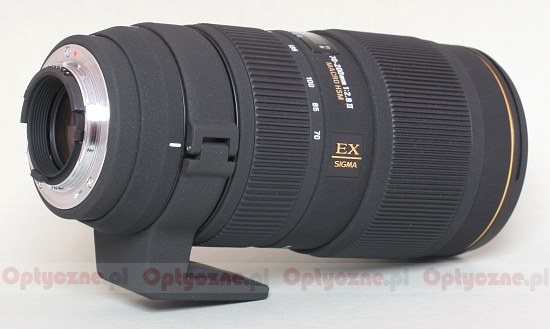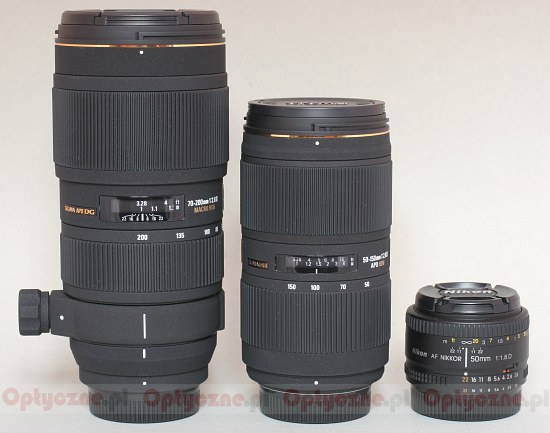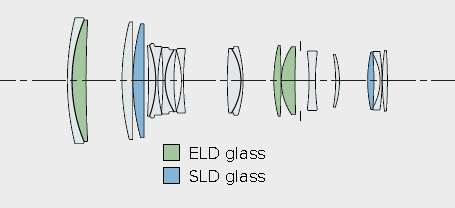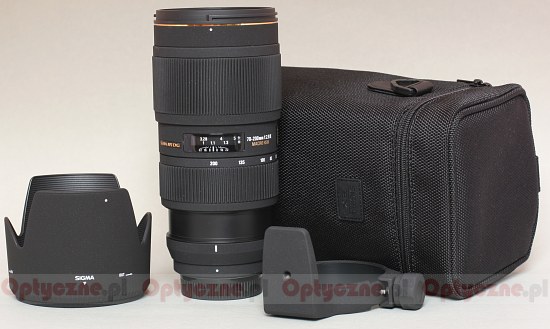Sigma 70-200 mm f/2.8 II EX APO DG Macro HSM
3. Build quality
 |
In the upper part of the lens we find a huge ring for manual focusing. It’s very convenient to hold, works with an appropriate resistance, and at the same time allows a very precise work. It also allows correcting focus both in MF and AF mode.
Please Support UsIf you enjoy our reviews and articles, and you want us to continue our work please, support our website by donating through PayPal. The funds are going to be used for paying our editorial team, renting servers, and equipping our testing studio; only that way we will be able to continue providing you interesting content for free. |
- - - - - - - - - - - - - - - - - - - - - - - - - - - - - - - - - - - - - - - - - - - - - - - -
Beneath it we find a legible focusing scale expressed in meters and feet, and placed behind a pane of glass. Even lower we find a ring for changing the focal length. It works as it should, as well. Moving further we find a solid tripod mount ring, which is supplied by Sigma.
Sigma 70-200 mm f/2.8 II has the dimensions and weight typical of its class. The table shows the comparison of the tested Sigma, its predecessor and unstabilized competitors of Tamron and Canon’s stable.
 |
As we mentioned, the number of optical elements hasn’t changed compared to the predecessor. Sigma comprises 18 elements set in 15 groups, then. Similar numbers of elements we find both in Canon and Tamron. Sony has more and Nikkor AF 80-200 mm f/2.8D ED less of them. A thorough look and the diagrams enables us to see the differences to the predecessor. In it, the elements number 2 and 16 were made of SLD glass, and lenses no. 12 and 13 of ELD glass. In the version II lenses no. 12, 13 and 16 have remained unchanged. The element no. 2 ceased to be made of SLD glass and started to be manufactured from ELD. SLD glass appeared, on the other hand, in the lens no. 4, which was an ordinary element before. In the lens we also find a circular diaphragm of nine blades that can be closed to f/22.

What’s interesting, the lens with Nikkor mount, tested on Nikon D200, communicated badly with the camera body with regards to transferring the focal length information. The lens comes out as an instrument of 50-150 mm parameters. You need to remember that when looking through the sample pictures and checking their EXIFs. The focal lengths there must be multiplied by a 1.4 factor.
Conventionally with EX series we get abounding equipment and good warranty conditions. Apart from the lens, we’ll find a set of caps, solid tripod mount ring, lens hood and a solid casing in the box. We also get three warranty years as a standard, but for some extra charge we can extend it over another two.
 |






